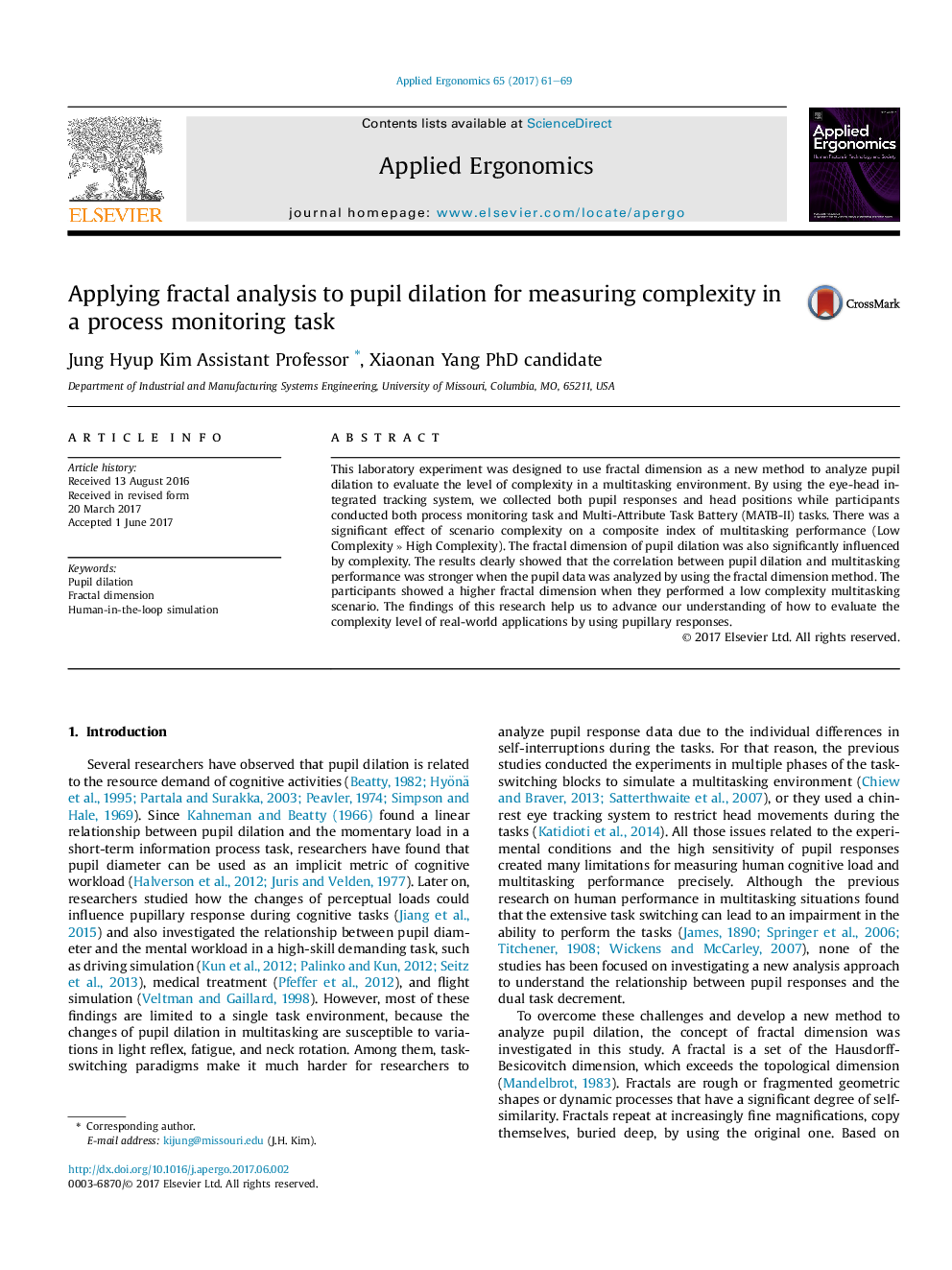| Article ID | Journal | Published Year | Pages | File Type |
|---|---|---|---|---|
| 4971936 | Applied Ergonomics | 2017 | 9 Pages |
Abstract
This laboratory experiment was designed to use fractal dimension as a new method to analyze pupil dilation to evaluate the level of complexity in a multitasking environment. By using the eye-head integrated tracking system, we collected both pupil responses and head positions while participants conducted both process monitoring task and Multi-Attribute Task Battery (MATB-II) tasks. There was a significant effect of scenario complexity on a composite index of multitasking performance (Low Complexity » High Complexity). The fractal dimension of pupil dilation was also significantly influenced by complexity. The results clearly showed that the correlation between pupil dilation and multitasking performance was stronger when the pupil data was analyzed by using the fractal dimension method. The participants showed a higher fractal dimension when they performed a low complexity multitasking scenario. The findings of this research help us to advance our understanding of how to evaluate the complexity level of real-world applications by using pupillary responses.
Related Topics
Physical Sciences and Engineering
Computer Science
Human-Computer Interaction
Authors
Jung Hyup (Assistant Professor), Xiaonan (PhD candidate),
